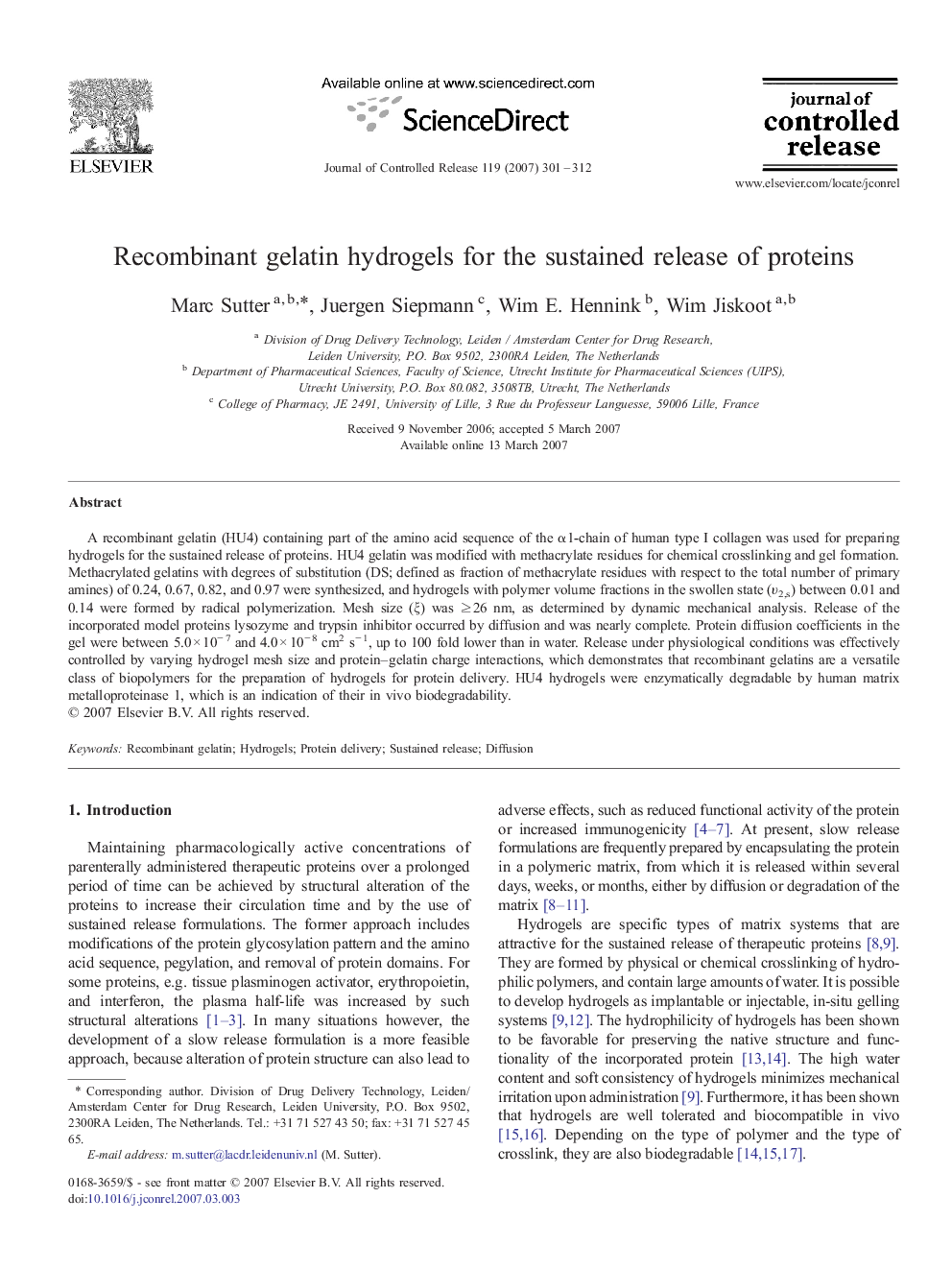| Article ID | Journal | Published Year | Pages | File Type |
|---|---|---|---|---|
| 1426927 | Journal of Controlled Release | 2007 | 12 Pages |
A recombinant gelatin (HU4) containing part of the amino acid sequence of the α1-chain of human type I collagen was used for preparing hydrogels for the sustained release of proteins. HU4 gelatin was modified with methacrylate residues for chemical crosslinking and gel formation. Methacrylated gelatins with degrees of substitution (DS; defined as fraction of methacrylate residues with respect to the total number of primary amines) of 0.24, 0.67, 0.82, and 0.97 were synthesized, and hydrogels with polymer volume fractions in the swollen state (υ2,s) between 0.01 and 0.14 were formed by radical polymerization. Mesh size (ξ) was ≥ 26 nm, as determined by dynamic mechanical analysis. Release of the incorporated model proteins lysozyme and trypsin inhibitor occurred by diffusion and was nearly complete. Protein diffusion coefficients in the gel were between 5.0 × 10− 7 and 4.0 × 10− 8 cm2 s− 1, up to 100 fold lower than in water. Release under physiological conditions was effectively controlled by varying hydrogel mesh size and protein–gelatin charge interactions, which demonstrates that recombinant gelatins are a versatile class of biopolymers for the preparation of hydrogels for protein delivery. HU4 hydrogels were enzymatically degradable by human matrix metalloproteinase 1, which is an indication of their in vivo biodegradability.
